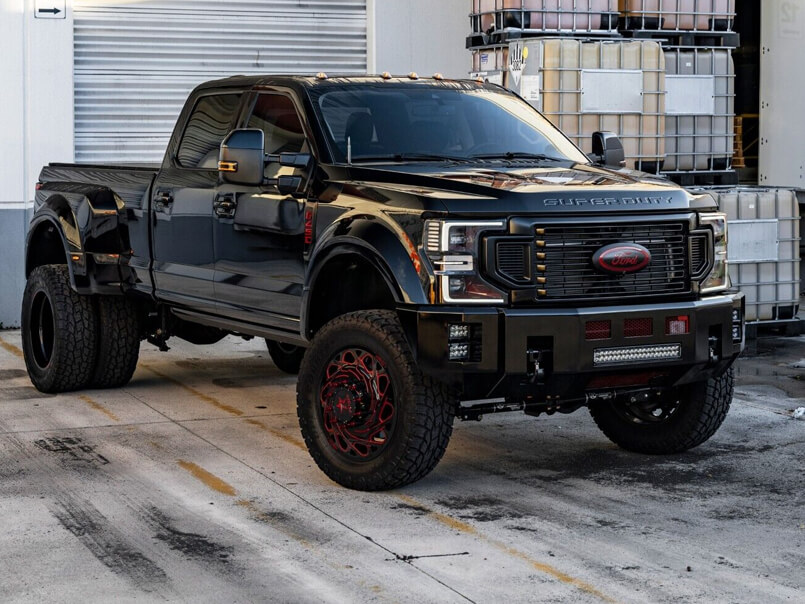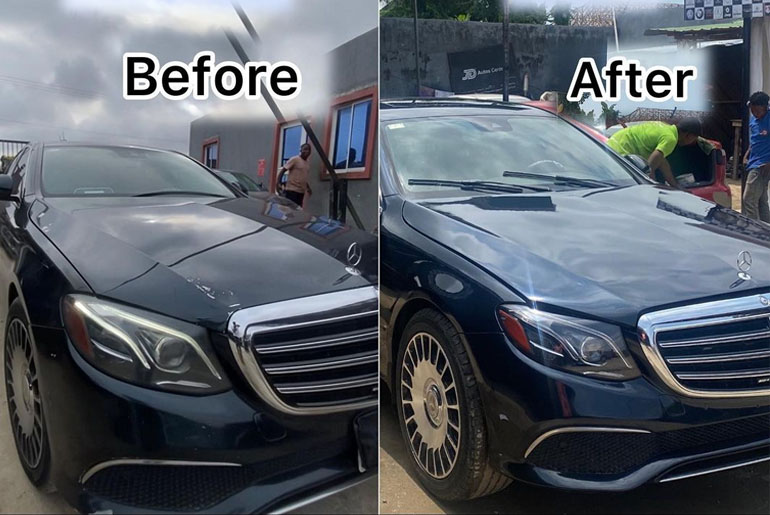Before taking your truck off-roading, ground clearance is one of the most important things to improve. It keeps your truck’s underbody—and all its mechanical components—from hitting big rocks and other obstacles. In addition, adding ground clearance improves approach and departure angles, letting the truck crawl over more extreme terrain.
Table of Contents
Things like portal axles and lift kits can increase ground clearance, although some owners need to take lift kits farther. But one of the most popular ground clearance mods is fitting bigger wheels. Many off-road truck builds, both OEM and aftermarket, feature larger-than-standard wheel sizes.
But you should first consider the pros and cons before fitting a bigger wheel on your truck.
What are the Benefits of Bigger Wheels?
Fitting larger wheels is a staple off-roading modification for a reason. Larger wheels do lift a truck higher into the air, increasing ground clearance. But the increase in wheel size has additional benefits.
A larger wheel means larger tires can be fitted to the truck. And large tires do help a truck handle better on dirt and gravel, even with on-pavement braking. There’s more rubber coming into contact with the ground, after all. Diesel Tech says these larger tires can improve your truck’s towing capability.
Fitting larger wheels to your truck can also improve it in other ways. Wheels can greatly impact a vehicle’s aesthetics, and large-diameter wheels and tires make any vehicle look lower, longer, and wider. Increasing a brake rotor’s size is one way to decrease braking distance, and fitting a larger wheel means the larger rotor can fit on your truck.
However, bigger wheels do have several disadvantages. What are the downsides of these bigger wheels?
The number one is the price. Bigger wheels cost more to install and replace if they get damaged. But just like the benefits of bigger truck wheels add on, so do the downsides. Many manufacturers offer optional up-sized wheels. But to offer any wheel-and-tire option, manufacturers have to design suspensions with a specific combined diameter.
Offering a bigger wheel means the tire’s sidewalls have to get thinner, as explained by car critics like Cars.com and Performance Plus Tire. These big wheels and thin tires mean your truck’s ride gets worse (and noisier). There’s less of an air cushion between you and the road. This also means your tires and wheels are easier to damage.
This can be countered by increasing the tire’s sidewall, which is often the case for off-road tires. But that can cause more problems. This can throw off your speedometer, odometer, and tire pressure sensors unless you recalibrate them.
Also, these bigger wheels and tires add weight. Not only does this lower fuel economy, per one Consumer Reports warns, but it also puts extra strain on your suspension and brakes, especially if you don’t take advantage of the extra room and fit larger rotors.
Finally, if you fit bigger wheels on your truck to fit bigger tires, Wheelfire recommends installing a lift kit. But this can make several issues even worse. It adds cost, but lifting the truck even higher raises its centre of gravity. The additional grip from the tires raises the risk of tipping over.
Conclusion
Most of the benefits of bigger truck wheels are specific to off-roading. So, if you aren’t planning on hitting the dirt, bigger wheels are mostly just about the look but suitable for Nigerian roads.







